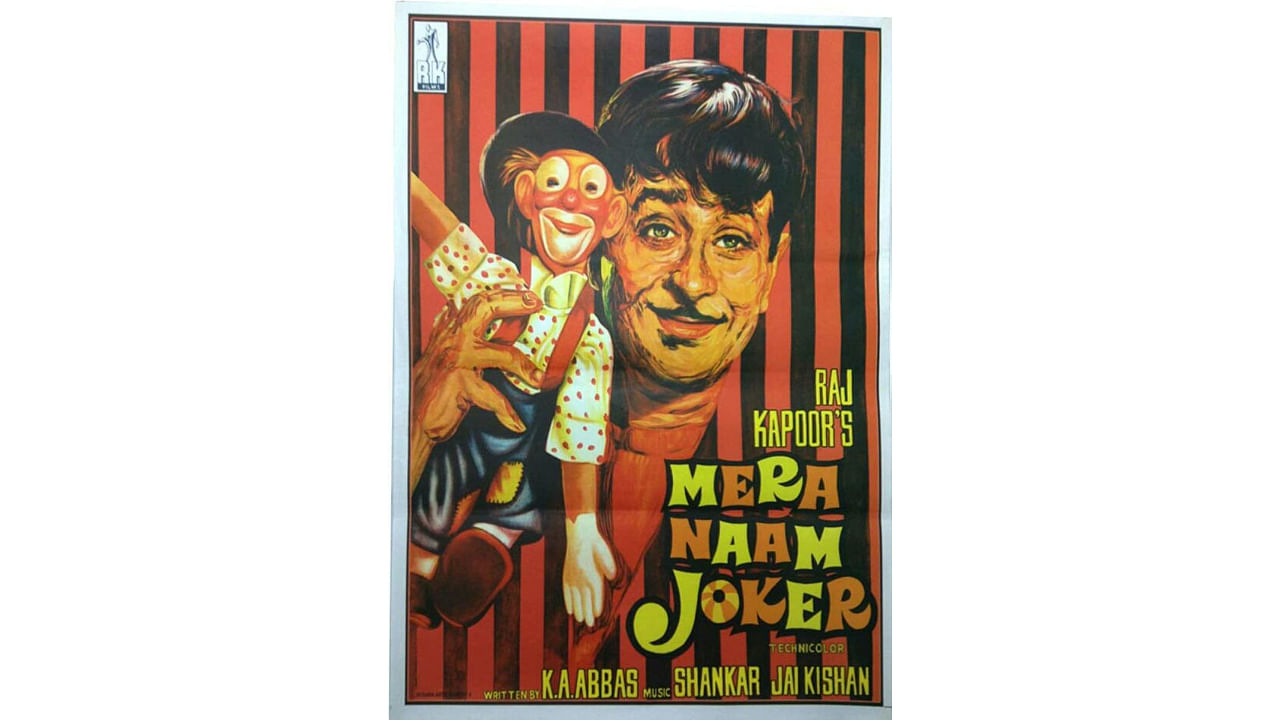

I can still visualise, shot by shot, the climax of Mera Naam Joker (1970). Clad as the Joker par excellence, Raj Kapoor was singing the immortal song, ‘Jeena yahan, marna yahan’. He did a thumbs up gesture to me and Simi Garewal sitting in the audience. I also replied smiling. Only a director, and actor with a true vision like Raj Kapoor could conceive and take such a meaningful shot.
My choice to script and direct films was inspired by four leading personalities. Dr V Shantaram, who pioneered the trends in the talkies era of Hindi films, Bimal Ray, the master story teller on celluloid, Raj Kapoor, who balanced the arts of direction and acting perfectly and Guru Dutt the brilliant innovator and poet of celluloid.
My admiration for Raj Kapoor started after I viewed Mehboob Khan’s classic Andaz in 1949. Though he appeared on screen much later than Dilip Kumar, he stole the show from the grand thespian in his first appearance. Dilip Kumar planned and calculated his steps carefully. Raj Kapoor was diametrically opposite, spontaneous, passionate and unpredictable. He was a born actor, who mastered the art of seriocomedy. As an actor, he could effortlessly use eyes, and facial expressions to convey an emotion.
I was amazed at the way Raj Kapoor directed his own ventures. He was mainly Raju the eternal tramp in his super hits Awaara and Shree 420. The main booster to his memorable films was tout scripts by K Abbas and Inder Raj Anand. As a director, he gave full justice to his artistes, technicians and production people.
Never did Raj Kapoor impose his views on anyone. The song sequence ‘Dost dost na raha’ from Sangam, though it is sung by Raj Kapoor, focused more on his co-stars Rajendra Kumar and Vyjayanthimala. How many actors, or directors dared to do so?
As an actor, Raj Kapoor always surrendered to directors he was working for. Gopinath, Paapi, Jagte Raho, Anari and Teesri Kasam are ample proof of Raj Kapoor’s histrionic abilities. He was not debonair and handsome like Dev Anand. Yet he forged great chemistry with heroines like Nargis, Meena Kumari, Nutan, Padmini and Vyjayanthimala. There was novelty in his romantic scenes.
When I touched Raj Kapoor’s feet with respect after winning a popular award for Upkar in 1967, he blessed me and assured to wink with me in the near future. He kept his promise by casting me in Mera Naam Joker. I requested Raj Kapoor to rewrite the first half in which I was working. He and original script writer K A Abbas officially permitted me. Both were happy with my draft and it was shot frame by frame as it is.
Raj Kapoor advised me to speak in a low tone and concentrate on my expressions. After completing the shooting, he affectionately told me, “Manoj, tera aankh bahut kuch kahata hai jo dialogue se nahin hota (your eyes are more expressive than your words).” I was really moved by his statement.
His musical sense was unique and his soul was best understood by Shankar Jaikishan. After the demise of Jaikishan, a heart broken Raj Kapoor opted for Laxmikant-Pyarelal in Bobby and Satyam Shivam Sundaram. Though Laxmikant-Pyarelal gave bumper hit songs, they could never replace Shankar-Jaikishan as Raj Kapoor himself claimed once.
The disaster of Mera Naam Joker was the biggest tragedy in Raj Kapoor’s life. He was almost on the verge of selling R K Studio. But only Raj Kapoor could bounce back with a mega hit like Bobby.
His last offering Ram Teri Ganga Maili was R K Film’s biggest hit. Raj Kapoor never acted in his directorial ventures after Mera Naam Joker. My mentor, his popularity in Russia, Eastern Europe and China, are still unmatched. Even today in Russia or China you may hear many singing ‘Awara hoon’ and ‘Mera joota hai japani’.
(As told to Ranjan Das Gupta)